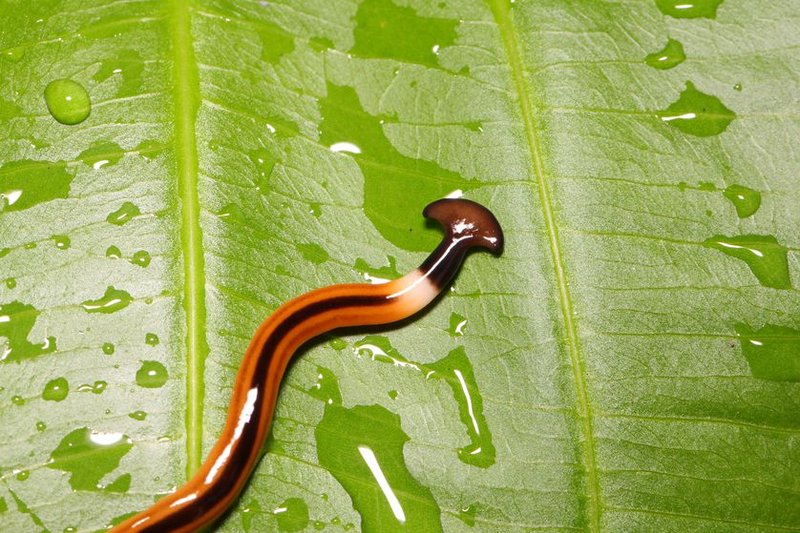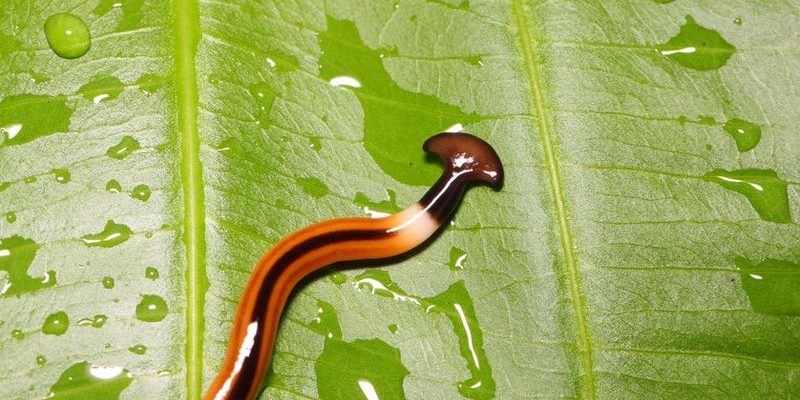
So, let’s dive into the world of hammerhead worms. These intriguing creatures are known for their unique appearance and behaviors. But what does their presence mean for your garden and soil health? In this article, we’ll explore whether these worms are beneficial or harmful and how you can manage them if they’ve made a home in your soil.
What Are Hammerhead Worms?
Hammerhead worms, scientifically known as *Bipalium*, are flatworms that come from the family of land planarians. Their name comes from their distinctive hammer-like shape, which looks quite different from your everyday earthworm. They can range in color from brown to gray to even a deep, rich black, often with striking patterns.
These creatures primarily thrive in damp environments and are frequently found in tropical and subtropical areas. However, they’ve made their way to other regions too, including parts of the United States. Their unique appearance might catch your eye, but don’t let that charm distract you from their potential impact on your garden.
Interestingly, hammerhead worms are predators. They primarily feed on smaller invertebrates, including earthworms. That’s an important detail since earthworms contribute significantly to soil health. You might be wondering how a creature that looks so unusual could be a threat to your soil ecosystems.
The Role of Soil Health in Gardening
Before we dive deeper into the effects of hammerhead worms, let’s talk about soil health itself. It’s not just dirt — it’s a living ecosystem. Healthy soil is rich in nutrients, supports plant growth, and houses essential microorganisms. Think of it as the foundation of a house; without a solid base, everything can come crashing down.
Soil health is determined by several factors, including soil structure, nutrient levels, moisture, and the presence of beneficial organisms like earthworms and microbes. When soil is healthy, it can retain water, resist erosion, and support diverse plant life. On the flip side, unhealthy soil has poor structure and is often depleted of nutrients, making it challenging for plants to thrive.
Here’s the thing: maintaining good soil health is crucial for anyone interested in gardening or agriculture. So, when a creature like the hammerhead worm enters the picture, it raises concerns about what could be happening beneath our feet.
Are Hammerhead Worms Harmful to Soil Health?
Now, let’s get to the heart of the matter. Are hammerhead worms beneficial or harmful? Generally speaking, hammerhead worms are considered harmful to soil health. Their predatory nature means they feed on earthworms and other beneficial soil organisms, disrupting the balance that keeps your soil healthy.
When hammerhead worms invade your garden, they can lead to a decline in the earthworm population. Since earthworms aerate the soil and improve nutrient availability, their absence can result in poorer soil structure. This could ultimately affect plant growth and yield. If you notice fewer earthworms in your garden, it may be a sign that these hammerhead worms are wreaking havoc.
In addition to their impact on earthworms, hammerhead worms can also disrupt the natural processes of decomposition and nutrient cycling in the soil. By preying on beneficial organisms, they might contribute to a breakdown of healthy soil ecosystems.
Identifying Hammerhead Worms in Your Garden
If you think you might have hammerhead worms in your garden, it’s essential to know how to identify them. As mentioned earlier, these worms have a distinctive hammer-shaped head and are flat, measuring anywhere from a few inches to almost a foot long! Their coloration can vary but is often darker, making them easier to spot against the soil.
To identify them, look for the following characteristics:
- Flat Body: They have a long, flat body that can appear slimy.
- Hammer-Shaped Head: The most noticeable feature is their unique head shape, which looks like a hammer or spatula.
- Movement: Unlike earthworms, hammerhead worms move quickly and can often be seen slithering across the soil surface.
If you find these worms in your garden, it’s best to take action before their population grows. Let’s discuss some methods for managing them.
How to Manage Hammerhead Worms
If you’ve spotted hammerhead worms in your garden, here are a few steps you can take to manage their presence effectively:
1. **Remove Them Manually:** If you see a hammerhead worm, it’s best to remove it by hand (gloves recommended!). You can place them in a plastic bag and dispose of them.
2. **Improve Soil Conditions:** Hammerhead worms thrive in damp environments, so improving soil drainage can help deter them. Amend soil with organic materials to promote healthy drainage.
3. **Encourage Beneficial Organisms:** To combat hammerhead worms, focus on promoting beneficial organisms like earthworms. You can do this by adding organic matter, like compost, to your soil.
4. **Monitor Regularly:** Keep an eye on your soil and garden for any signs of hammerhead worms or a decline in your earthworm population. Early detection is key to managing any pests before they become a larger issue.
By incorporating these steps into your gardening practices, you can support a healthy soil ecosystem and keep hammerhead worms at bay.
The Bottom Line: Hammerhead Worms and Soil Health
So, where does that leave us with hammerhead worms? While they may seem fascinating, these creatures can be detrimental to soil health. Their predatory nature risks the essential earthworm population that helps maintain a balanced and thriving ecosystem. Protecting your soil is vital, not just for your garden but for the overall health of the environment.
If you spot hammerhead worms, don’t panic. Just remember what you’ve learned here: they can be managed through careful gardening practices and soil management. After all, healthy soil is key to a flourishing garden, and preventing hammerhead worms from taking over is well worth the effort.
In conclusion, while hammerhead worms may add an element of curiosity to our gardens, they are not the allies we want in our soil. By staying vigilant and proactive, we can ensure our gardens remain vibrant and healthy for years to come.

